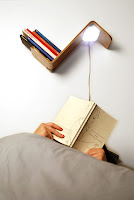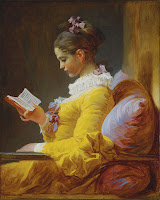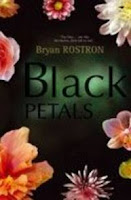
After finding PAGEONE, I felt unsatisfied and was still searching for something less commercial. On my way to the Hong Kong Central Library, I stumbled upon a shop called, as Murphy would have it, the Commercial Press. The entrance was too timid and, if I hadn’t seen a poster of a book, I wouldn’t even have noticed that it was indeed a bookshop.
Walking up the staircase, I found what seemed to be a version of Van Schaik, an academic bookshop back home. I ruffled through the English section and came upon a wonderful series of the most beautiful covers including Italo Calvino’s
If on a Winter’s Night a Traveler and Ernest Hemingway’s
A Farewell to Arms, which had definitely been selected by a well-read person. They were on special: take two, get the third one free.
I was thinking that the extra suitcase I wanted to buy to accommodate my shopping is in the end going to be filled only with books, and no clothes. But, when I looked around for a chair to sit in and go through my selection, I couldn’t find one. As I was pressed for time, I made up my mind to return to purchase my threesome. A week later, I am sad to report, they are not there anymore. I doubt that they were all sold and suspect they have been hidden or returned.


Next I found the Bookbuddy, an overstocked children’s bookshop that is everything a bookshop should not be. Only the spines of books face you from wall-to-wall shelves, overwhelming you with choice and leaving you uninspired. The shop evokes no passion for books and the pleasure of reading them - it might as well have been a section of Toys’R’us, judging by the selection of Disney titles and toys.
I almost ran, in spite of my blistered feet, towards the exit of the mall, in desperate need of fresh air and a fresh perspective on books.
In the TST region of Kowloon I found Swindon Books. As I walked towards it, I could see a group of people filling the sidewalk in front of the shop and thought for a second that I had found some students or book groupies congregated in front of their favorite book spot. Unfortunately my fantasy was short-lived as they were only the construction workers from the site across the bookshop taking a break.
Swindon also has a very academic interior, but contains many more general English books then academic titles. The shop is well stocked, with a great bargain section and the best travel section I have seen yet. Although it lacks atmosphere, which could be remedied with background music, I found one elusive chair where I sat and, as I stared at a V.S. Naipul to my right, felt comfortably at home in the bustling city.
I have come to realise that, as a book lover visiting Hong Kong, you will indeed be satisfied by what is on offer. However, as a bookshop lover, I am left wanting. But during the next few months that remain of my stay here, I will be on the lookout for the best places to read, while scouting for secondhand bookshops and everything else book-related that Hong Kong has on offer.

















 As we review our favourite self-help books, we are not taking a survey of those glitzy volumes that crowd the so-called psychology sections of bookshops, with their trite philosophies and shallow epigrams, their pseudo-science and convoluted logic. Our self-help books are a selection of volumes, both fiction and non-fiction, that have taught us how to live. They are, in no particular order and without exhausting the list:
As we review our favourite self-help books, we are not taking a survey of those glitzy volumes that crowd the so-called psychology sections of bookshops, with their trite philosophies and shallow epigrams, their pseudo-science and convoluted logic. Our self-help books are a selection of volumes, both fiction and non-fiction, that have taught us how to live. They are, in no particular order and without exhausting the list:



 It seems that the blurb of each new book published locally, whether fiction or non-fiction, claims to represent the state of South Africa today in stark, unprecedented honesty. And more often than not it is a country depicted either as shackled to its past or with the key to its manacles in its bloodied fingers. Black Petals by Bryan Rostron is another such novel, one which understands the past as a tangle of secrets that only recede further as one approaches, and the present as just as illusory.
It seems that the blurb of each new book published locally, whether fiction or non-fiction, claims to represent the state of South Africa today in stark, unprecedented honesty. And more often than not it is a country depicted either as shackled to its past or with the key to its manacles in its bloodied fingers. Black Petals by Bryan Rostron is another such novel, one which understands the past as a tangle of secrets that only recede further as one approaches, and the present as just as illusory.







